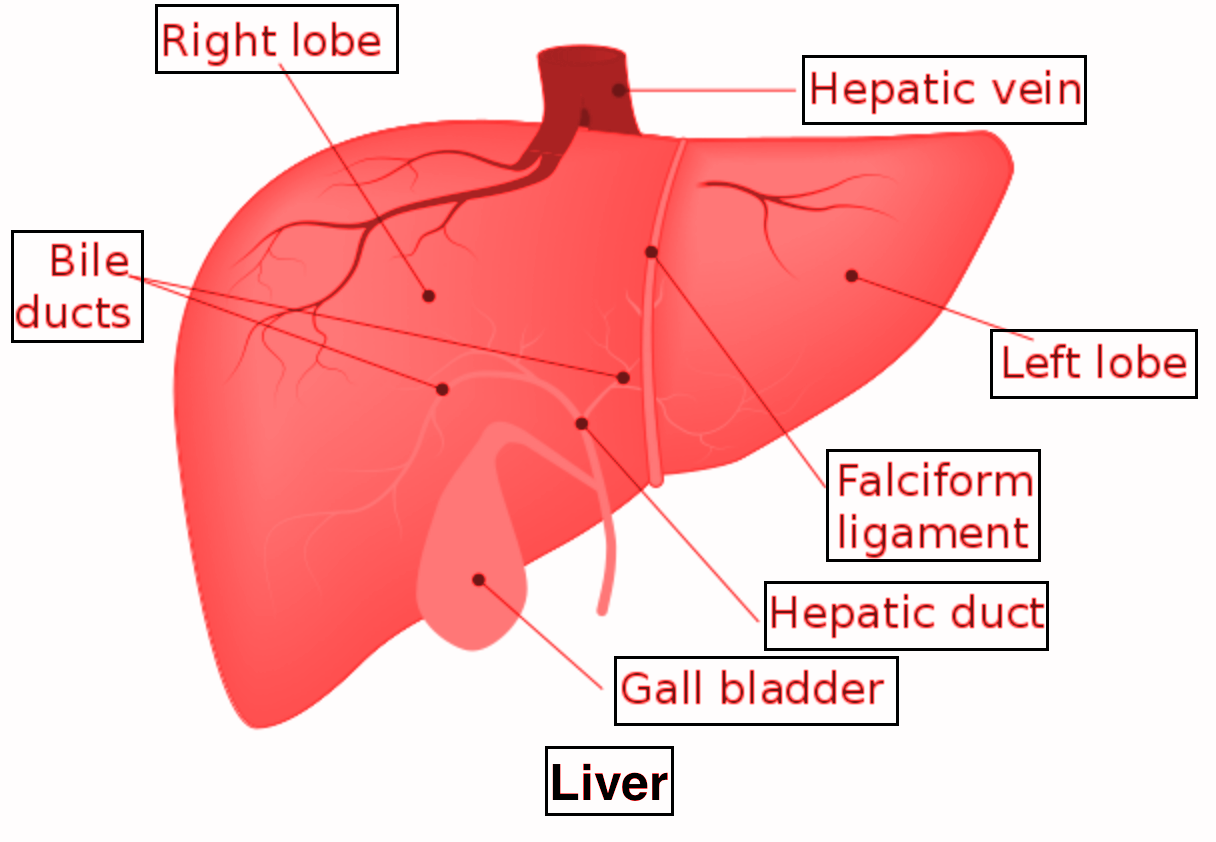
The liver is called the reticular gland because
(a) The shape is reticular
(b) It contains reticular tissue
(c) Lobules branches and anastomose with one another to form a network
(d) Hepatic duct and cystic duct unite to form the bile duct
Answer
565.8k+ views
Hint: The liver is an accessory digestive organ that produces bile, an alkaline fluid containing cholesterol and bile acids, which helps the breakdown of fat. The liver is known to have a network of supporting mesh, which is a type of fiber in connective tissue. These fibers crosslink to form the fine meshwork.
Complete answer:
The Liver is called the reticular gland because it contains reticular tissue. The liver is an organ only found in vertebrates which detoxifies various metabolites, synthesizes proteins, and produces biochemicals necessary for digestion and growth. The liver is a reddish- brown, wedge- shaped organ with two lobes of unequal size and shape. Liver tissue is made up of lots of smaller units of liver cells called lobules.

Many canals carrying blood and bile run between the liver cells. Reticular fiber is a type of fiber in connective tissue. It is composed of type III collagen secreted by reticular cells. Reticular fibers crosslink to form a fine meshwork. This network acts as a supporting mesh in soft tissue such as the liver, bone marrow, and the tissues and organs of the lymphatic system. Hence, the Liver is called the reticular gland because it contains reticular tissue.
Additional Information:
- Lobules are the functional units of the liver. Each lobule is made up of millions of hepatic cells, which are the basic metabolic cells.
- The lobules are held together by a fine, dense, irregular, fibroelastic connective tissue layer extending from the fibrous capsule covering the entire liver known as Glisson’s capsule.
- The whole surface of the liver, except for the bare area, is covered in a serous coat derived from the peritoneum, and this firmly adheres to the inner Glisson’s capsule.
So, the correct answer is ‘(b) It contains reticular tissue’.
Note:
- The liver is both the heaviest internal organ and the largest gland in the human body.
- It is located in the right upper quadrant of the abdominal cavity, it rests just below the diaphragm, to the right of the stomach, and overlies the gallbladder.
- The liver is connected to two large blood vessels: the hepatic artery and the portal vein. The hepatic artery carries oxygen- rich blood, whereas the portal vein carries blood rich in digested nutrients.
Complete answer:
The Liver is called the reticular gland because it contains reticular tissue. The liver is an organ only found in vertebrates which detoxifies various metabolites, synthesizes proteins, and produces biochemicals necessary for digestion and growth. The liver is a reddish- brown, wedge- shaped organ with two lobes of unequal size and shape. Liver tissue is made up of lots of smaller units of liver cells called lobules.

Many canals carrying blood and bile run between the liver cells. Reticular fiber is a type of fiber in connective tissue. It is composed of type III collagen secreted by reticular cells. Reticular fibers crosslink to form a fine meshwork. This network acts as a supporting mesh in soft tissue such as the liver, bone marrow, and the tissues and organs of the lymphatic system. Hence, the Liver is called the reticular gland because it contains reticular tissue.
Additional Information:
- Lobules are the functional units of the liver. Each lobule is made up of millions of hepatic cells, which are the basic metabolic cells.
- The lobules are held together by a fine, dense, irregular, fibroelastic connective tissue layer extending from the fibrous capsule covering the entire liver known as Glisson’s capsule.
- The whole surface of the liver, except for the bare area, is covered in a serous coat derived from the peritoneum, and this firmly adheres to the inner Glisson’s capsule.
So, the correct answer is ‘(b) It contains reticular tissue’.
Note:
- The liver is both the heaviest internal organ and the largest gland in the human body.
- It is located in the right upper quadrant of the abdominal cavity, it rests just below the diaphragm, to the right of the stomach, and overlies the gallbladder.
- The liver is connected to two large blood vessels: the hepatic artery and the portal vein. The hepatic artery carries oxygen- rich blood, whereas the portal vein carries blood rich in digested nutrients.
Recently Updated Pages
The number of solutions in x in 02pi for which sqrt class 12 maths CBSE

Write any two methods of preparation of phenol Give class 12 chemistry CBSE

Differentiate between action potential and resting class 12 biology CBSE

Two plane mirrors arranged at right angles to each class 12 physics CBSE

Which of the following molecules is are chiral A I class 12 chemistry CBSE

Name different types of neurons and give one function class 12 biology CBSE

Trending doubts
One Metric ton is equal to kg A 10000 B 1000 C 100 class 11 physics CBSE

What is 1s 2s 2p 3s 3p class 11 chemistry CBSE

Discuss the various forms of bacteria class 11 biology CBSE

State the laws of reflection of light

Explain zero factorial class 11 maths CBSE

An example of chemosynthetic bacteria is A E coli B class 11 biology CBSE




